
Interview with Professor and Architect Terunobu Fujimori
UNIVERSITY OF TOKYO, 2007
LENKA KŘEMENOVÁ AND DAVID MAŠTÁLKA / A1ARCHITECTS
INTERPRETER PETR HOLÝ / DIRECTOR OF THE CZECH CENTER IN TOKYO
An Interview With Architect And Professor Terunobu Fujimori was recorded on April 9, 2007 by Lenka Křemenová and David Maštálka during their two-month journey through Japan, with the warm and patient interpretation by the director of the Czech Center in Tokyo, Petr Holý.
After the first few days in Tokyo, we were surprised as architects by the diversity of contemporary building materials in architecture. In this regard, the contrast with your work is interesting for us, as you primarily work with traditional materials, with their natural structure and texture. Can it be said that your approach in this respect is exceptional in the field of contemporary Japanese architecture?
At first glance, it may seem that there are very few wooden buildings in Tokyo, but it is merely an illusion. Just behind our university building, you will find only wooden structures. In the 1920s, a new law was introduced in Japan, and all wooden constructions had to be clad due to stricter fire safety regulations. Therefore, at first sight, it is not apparent that the houses around are wooden. However, most single-story houses in Japan have a wooden load-bearing structure. This fact can only be revealed inside, and even then it is sometimes very difficult.
Nevertheless, despite this, your houses stand out at first glance, and they are characterized by the use of natural materials such as clay plaster, stone, or green-covered facades. We know that you spent a long time studying the history of architecture; when did you actually start creating yourself?
Indeed, I only began designing buildings at the age of 45; until then, I was solely engaged in the history of Japanese architecture from the early 20th century. One of my interests was, among others, Czech architects who worked in Japan in the 1920s.
What was the impetus for your first project?
I come from Nagano, which is essentially rural Japan. And my hometown asked me if I could design a local museum. When I arrived on site, I decided that using local materials would be most suitable for the building. This was actually the first impulse to work with natural materials. However, the market for building materials at that time offered nothing like that.
How did you address this issue?
You may know this, but traditional crafts are still alive in Japan, working with wood or stone, for example. Carpentry and joinery are still highly valued in society. And if you look closely, you can still find carpenters who work with wood in traditional ways, known as Daiku. I managed to find such craftsmen. Many construction companies in today’s Japan have adapted to contemporary trends, but even in these companies, there are still people who master traditional crafts. On the contrary, they were happy to apply their old techniques again during the museum's construction. They are truly very proud of their ability to work not only with wood but also with other materials. There are not many of these craftsmen left in the world. That was my journey toward natural materials and craft tradition.
Have you assembled your own team of proven craftsmen over time?
No, I do not work with any fixed team. I always try to find local craftsmen at the site. And I’m not the only one who works with traditional craftsmen; architects like Tadao Ando and Arata Isozaki also have experience with wood. Every Japanese architect works with wood.
Unfortunately, not many new wooden buildings are being constructed in the Czech Republic, but it is true that society has been changing lately. However, traditional crafts are rather in decline.
That is, of course, a global issue. Today, wood is predominantly being used for construction only in Japan, North America, and possibly in Scandinavia.
When a wooden family house is built in the Czech Republic, it is mostly some contemporary building system like 2by4, or some similar adopted system from the world.
You will also find quite a number of buildings in Japan constructed using the 2by4 system. There is one special reason for this: primarily economic — the Japanese export Toyota to North America and must buy something from the Americans, or rather from the Canadians, and that is wood, which is imported in the form of planks and is therefore ideal for use in the 2by4 system. In Japan, we can distinguish two kinds of carpenters: on one side, carpenters who continue the tradition and on the other side, carpenters who exclusively use adopted structural systems.
2by4 is primarily a cheaper system.
Yes, it is of course cheaper, and it is used by large developers when constructing family homes.
However, I would like to really commend traditional Japanese carpenters, who I believe are the best in the world at their craft, and I always enjoy collaborating with them. They have literally incredible skills and craftsmanship. You can best appreciate this when you see a construction site firsthand.
Is the preservation of the craft in Japan a family tradition?
Yes, in most cases, it is, and it is passed down from father to son. The best craftsmen come from those old carpentry families. A special kind of craftsman is called Miyadaiku, who specialize solely in the construction and reconstruction of temples, where skills are passed down 100%.
What besides the use of local materials inspires you?
I don't know; perhaps it is world architecture, which has captured my soul and which I try to encounter with my own eyes. For example, in the Czech Republic, Plečnik's work left a deep impression on me.
From your work, your tea houses are very interesting, and we would like to talk with you about them for a while, as I myself chose the theme of the tea house for my diploma thesis.
Coincidentally, a book about tea houses will be published in English in about a month, which I co-authored with Tadao Ando and Arata Isozaki. It will, of course, include some information about the history of tea houses and the tea ceremony. You will surely recognize the name of the master Sen no Rikyū, who is the founder of tea culture and the tea ceremony in Japan. The tradition that Rikyū created survives to this day. However, there are not many books about the architecture of tea houses.
Basic information about the tradition and history of the tea ceremony is certainly available, but we are interested in how alive this tradition is from your perspective today and what kind of people practice the ceremony today?
Unfortunately, the tea ceremony is no longer an everyday affair, but there are certainly several tens of thousands of people who actively engage in it, including my wife. So we cannot say that the tea culture has vanished, but it is no longer a daily occurrence.
Is it true that the design and realization of a tea house is considered a "masterpiece" of Japanese architects' work?
Yes, of course. Rikyū created a tea room smaller than the space we are sitting in now, and we, as architects in 2007, do not believe we could surpass something like that. He showed us how far one can go with the minimization of space. On one hand, the space is minimal, but on the other hand, it contains all the elements that a person needs for complete relaxation. Sen no Rikyū was the first to use very refined elements, such as a very small entrance or a ceiling divided into multiple levels, and not to mention the recessed hearth. The smallest tea room in Japan is the space where he received the Japanese warlord Hideyoshi. This unique tea room was created for just two people — the tea master and Hideyoshi as the guest. The tea room has been preserved to this day and is called Tai-an. It belongs to the Omotesenke tea school and is located in one of the temples in Kyoto. It is even possible to visit it based on a written request. The life of Sen no Rikyū is shrouded in mystery; as you surely know, he had to end his life through ritual suicide — seppuku, which Hideyoshi himself ordered him to do. The death of the greatest tea master is also the point at which literature on tea rooms ends. For me, the hardest task is what’s next … how to continue working with the material that Rikyū left us in the 16th century. Because everything we strive for today is ultimately similar to what Master Rikyū already designed (laughs). For example, I insist that the entrance should be small, but that was already established by Rikyū, so I tried to design it from below (laughs).
Are you referring to your tea house in a tree, Takasugi?
Yes, but it doesn’t necessarily have to be in a tree.
Does this place an even greater emphasis on the feeling of humility when entering the room?
Yes. As I mentioned, we are drawing from Rikyū's legacy, but the hardest question is how to work with it.
Do architects try to surpass it in their work, or is it the highest ultimate goal?
For example, Arata Isozaki says that it is better not to think about it at all… not to ask yourself that question. It is not possible to think that you will surpass the master.
Simply put, when we enter through a small entrance, the space behind it always seems larger to us, and this finesse was already discovered by Rikyū, so you can’t work further with that. Rikyū also designed the entire tools for the tea ceremony. Something like Bauhaus. (laughs) He presented a completely new and coherent view on architecture and design of the tools used for the tea ceremony. His view is so unique and complex that it cannot be surpassed. While I have designed tea houses, the tools being used inside are based on Rikyū’s tradition. For example, the tea cup was traditionally turned on a wheel in Japan, but Rikyū shaped it by hand, and moreover, his cup is black! Imagine how it would even be possible to surpass a handmade black cup… Now I’ve only talked about the cup, but we could go through the entire tea house like this. So I can engage in adjustments to the space, but the elements inside are given and final.
Do your tea houses arise for a specific master, and does the client collaborate with you during the design?
By no means; clients who ask me for a design know that I am not one of those they could dictate any conditions to. There is one fundamental issue regarding tea houses, and that is their cost. For example, 1m² costs about 2 million yen (approximately 400,000 CZK), and that is more of an average price, without using the most expensive materials and craftsmen.
What is the most important aspect for you in designing a tea house, and how long did the work on Takasugi take, for example?
From design to realization, it was about half a year at most. Returning to Rikyū, he created the tea room for Hideyoshi in a week. Rikyū learned that Hideyoshi would go into battle along the path in front of his house, so he built the tea room as a surprise in just a week, including the design. For me, the most important thing, which leads me back to the first part of your question, is that the client for whom I design a tea house must simply be an intellectual; that is the first requirement. Primarily, the client must be able to specify exactly what they want from me. That is fundamental. It can be stated that there are approximately several tens of thousands of people in Japan who engage with tea, but those who are real, are very few, and among them surprisingly many are middle-aged women. In the modern age, women were not even allowed to engage with tea. However, this all changed after World War II. Today, men are stepping back, and the "female league" is coming (laughs). And now, in fact, it is mostly women who practice the tea ceremony. I would like to emphasize that on one hand, there is a highly traditional line of the tea ceremony, or tea culture itself, that goes from generation to generation along the lineage of Sen no Rikyū. But the houses I design are independent of it. This means that my customers are people who are a bit looked down upon in the eyes of traditionalists. They are people who may not belong to that group of several thousand tea lovers I talked about, but they are people who enjoy tea, who are happy to drink tea, and tea is actually one of their hobbies.
Thanks to this, your tea houses are very captivating and different from traditional tea buildings. Looking at them raises the question of what is essential for you in the design; the more time I spend on the topic of my diploma thesis, the more I doubt how much space I actually have in relation to the rules of the tea ritual, which the master Sen no Rikyū firmly defined in the 16th century?
There are several rules that are fundamental for a tea room or tea house. First and foremost, the space must be small, and there must be room for a fire inside, which symbolizes human habitation; after all, one needs fire to live. And that's all; then you have freedom. Nevertheless, another important thing comes to my mind: there must be room for at least one guest, and you must know that you have someone to invite. (laughs) And after that, you truly have free rein.
"Arigató gozaimas," thank you very much for your answer, but to learn a bit more from you, let’s move from tea houses to architecture in the city. One of the questions that must come to the mind of every architect from Europe when visiting Japan, especially Tokyo, is whether historical buildings are protected in Japan and whether they receive care similar to that in Europe, where we might say it is sometimes perhaps excessive.
In Japan, care is primarily dedicated to the protection of sacred buildings, such as Shinto shrines or Buddhist temples, and that’s where it ends. For me, as a historian, this fact truly leads to tears in some cases. When I had the opportunity to see Romanesque and Gothic buildings in Prague, I honestly could not believe how it was possible that these buildings have survived in their original form to this day.
The issue of monument care is currently specific in Prague primarily in often nonsensical regulations imposed by authorities on new constructions and renovations in the historical core of the city. Architects are often forced by the authorities to create almost theatrical facades just to avoid drawing too much attention to themselves.
As you see, in Japan, it’s exactly the opposite. (laughs)
Is there any discussion among Japanese architects on the topic of monument care? We have heard, for example, that one "historic" part of Shinjuku, which has its specific atmosphere, will succumb to a new commercial transport center.
Discussion on this topic is minimal; one of many reasons is also the issue of earthquakes. Within a period of approximately a hundred years, Japanese architects expect a strong earthquake during which everything will collapse or catch fire. And just recently, a very strong earthquake has been expected, as the last large earthquake struck Japan in 1923 in the Kanto region, so we expect another one now. From this perspective, some architects may feel that the protection of monuments is pointless, but I think it is a great shame.
Another question regarding the protection of historical cores of European cities is the issue of context concerning the genius loci of a place. Are similar questions addressed here in Tokyo, where it can be stated at first glance that the structure of the city, streets, and neighborhoods is very diverse, and in some places, one could even say overwhelming?
No, in Japan, as you can see, it really is a mixture of all sorts of buildings.
This relates to our next question about whether this overwhelming mixture of the city led you to establish a so-called detective agency that searches in various Tokyo neighborhoods for lost and unknown "historical" buildings?
We founded the "detective" agency primarily because architecture of the 20th century was an area that had not been mapped in Japan until then. And since we did not know where which building was, we had to walk and search, literally look for objects in various neighborhoods of Tokyo. During our search, we, of course, found buildings whose authors we were completely unaware of. They were buildings for which no materials were available that would facilitate their identification. This led to new and ongoing searches. The volume of our work gradually increased and increased. We were searching for buildings by architect Antonín Raymond, who died in 1976, but we did not have any complete list of buildings he worked on, or for example, Letzl; these were architects whose names we knew, but we did not know at all which buildings they constructed here. For example, Letzl was long believed to be an Austrian because he arrived in Tokyo during the time of Austria-Hungary. Only some of my much older colleagues realized that Letzl is from the Czech Republic. And at the moment we wanted to obtain some detailed information, we then encountered the Iron Curtain. Obtaining any information was very difficult, if not impossible, for us. And precisely searching for information from various sources was also one of the activities of our so-called detective agency, which had a lot of interesting work. In Japan, Czech culture was primarily dealt with by linguists, one of whom was bohemist Chino Eichichi, who was basically the only link. We tried to take advantage of the fact that he occasionally traveled to the Czech Republic, so he would always take several questions with him that interested us in the Czech Republic. I also collaborated with a student who was studying in the Czech Republic at that time, and with whom I eventually visited Prague just before the revolution. During my visit to Prague, I was accompanied by, among others, the first wife of Professor Chino, a Czech named Zdeňka Chino, who still lives in Prague today. With Antonín Raymond, who came to Japan from America, we had no idea whether he built any structures in Prague. With our detective agency, we were probably the first to provide a comprehensive report from the Czech Republic about where Raymond comes from. Conversely, in the case of architect Letzl, his work was known to architects and colleagues from Europe, but in the Czech Republic, his work was virtually unknown. The personalities we searched for were many, and in each case, we learned many interesting things; for example, Feuerstein designed the first theater set in Japan for the performance of RUR by Karel Čapek. It is worth mentioning that Karel Čapek’s books are very popular in Japan and are often translated. A particularly popular book is The Gardener's Year, which professor Chino used to say could be considered an unrivaled translation in Japan.
We suspect, professor, that you probably still have many work obligations and we wouldn’t like to take away your valuable time. Finally, we want to sincerely thank you for your warm reception and the space you dedicated to us, and we would like to invite you to the Czech Republic, where we can offer you a guide to buildings that may be of interest to you from the perspective of architectural history as part of your detective work. We would also be pleased to welcome you as a distinguished guest in the series of meetings on architecture VERSUS ARCHITEKT, which we organize in collaboration with the Czech Center in Prague alongside our studio. Thank you once again very much.
I gladly accept your invitation. In the Czech Republic, there are several buildings that I would really love to visit. Finally, I would also like to invite you to a two-day trip with my students to Nagano, which we are planning for the second half of April. So, if you are still in Japan at that time, you can join us.
Arigató gozaimas, thank you very much once again for your time. We are flying back to Europe at the end of May, so we cannot refuse your invitation to participate in the trip to Nagano. We are very much looking forward to our next meeting.
LENKA KŘEMENOVÁ AND DAVID MAŠTÁLKA / A1ARCHITECTS
INTERPRETER PETR HOLÝ / DIRECTOR OF THE CZECH CENTER IN TOKYO
An Interview With Architect And Professor Terunobu Fujimori was recorded on April 9, 2007 by Lenka Křemenová and David Maštálka during their two-month journey through Japan, with the warm and patient interpretation by the director of the Czech Center in Tokyo, Petr Holý.
After the first few days in Tokyo, we were surprised as architects by the diversity of contemporary building materials in architecture. In this regard, the contrast with your work is interesting for us, as you primarily work with traditional materials, with their natural structure and texture. Can it be said that your approach in this respect is exceptional in the field of contemporary Japanese architecture?
At first glance, it may seem that there are very few wooden buildings in Tokyo, but it is merely an illusion. Just behind our university building, you will find only wooden structures. In the 1920s, a new law was introduced in Japan, and all wooden constructions had to be clad due to stricter fire safety regulations. Therefore, at first sight, it is not apparent that the houses around are wooden. However, most single-story houses in Japan have a wooden load-bearing structure. This fact can only be revealed inside, and even then it is sometimes very difficult.
Nevertheless, despite this, your houses stand out at first glance, and they are characterized by the use of natural materials such as clay plaster, stone, or green-covered facades. We know that you spent a long time studying the history of architecture; when did you actually start creating yourself?
Indeed, I only began designing buildings at the age of 45; until then, I was solely engaged in the history of Japanese architecture from the early 20th century. One of my interests was, among others, Czech architects who worked in Japan in the 1920s.
What was the impetus for your first project?
I come from Nagano, which is essentially rural Japan. And my hometown asked me if I could design a local museum. When I arrived on site, I decided that using local materials would be most suitable for the building. This was actually the first impulse to work with natural materials. However, the market for building materials at that time offered nothing like that.
How did you address this issue?
You may know this, but traditional crafts are still alive in Japan, working with wood or stone, for example. Carpentry and joinery are still highly valued in society. And if you look closely, you can still find carpenters who work with wood in traditional ways, known as Daiku. I managed to find such craftsmen. Many construction companies in today’s Japan have adapted to contemporary trends, but even in these companies, there are still people who master traditional crafts. On the contrary, they were happy to apply their old techniques again during the museum's construction. They are truly very proud of their ability to work not only with wood but also with other materials. There are not many of these craftsmen left in the world. That was my journey toward natural materials and craft tradition.
Have you assembled your own team of proven craftsmen over time?
No, I do not work with any fixed team. I always try to find local craftsmen at the site. And I’m not the only one who works with traditional craftsmen; architects like Tadao Ando and Arata Isozaki also have experience with wood. Every Japanese architect works with wood.
Unfortunately, not many new wooden buildings are being constructed in the Czech Republic, but it is true that society has been changing lately. However, traditional crafts are rather in decline.
That is, of course, a global issue. Today, wood is predominantly being used for construction only in Japan, North America, and possibly in Scandinavia.
When a wooden family house is built in the Czech Republic, it is mostly some contemporary building system like 2by4, or some similar adopted system from the world.
You will also find quite a number of buildings in Japan constructed using the 2by4 system. There is one special reason for this: primarily economic — the Japanese export Toyota to North America and must buy something from the Americans, or rather from the Canadians, and that is wood, which is imported in the form of planks and is therefore ideal for use in the 2by4 system. In Japan, we can distinguish two kinds of carpenters: on one side, carpenters who continue the tradition and on the other side, carpenters who exclusively use adopted structural systems.
2by4 is primarily a cheaper system.
Yes, it is of course cheaper, and it is used by large developers when constructing family homes.
However, I would like to really commend traditional Japanese carpenters, who I believe are the best in the world at their craft, and I always enjoy collaborating with them. They have literally incredible skills and craftsmanship. You can best appreciate this when you see a construction site firsthand.
Is the preservation of the craft in Japan a family tradition?
Yes, in most cases, it is, and it is passed down from father to son. The best craftsmen come from those old carpentry families. A special kind of craftsman is called Miyadaiku, who specialize solely in the construction and reconstruction of temples, where skills are passed down 100%.
What besides the use of local materials inspires you?
I don't know; perhaps it is world architecture, which has captured my soul and which I try to encounter with my own eyes. For example, in the Czech Republic, Plečnik's work left a deep impression on me.
From your work, your tea houses are very interesting, and we would like to talk with you about them for a while, as I myself chose the theme of the tea house for my diploma thesis.
Coincidentally, a book about tea houses will be published in English in about a month, which I co-authored with Tadao Ando and Arata Isozaki. It will, of course, include some information about the history of tea houses and the tea ceremony. You will surely recognize the name of the master Sen no Rikyū, who is the founder of tea culture and the tea ceremony in Japan. The tradition that Rikyū created survives to this day. However, there are not many books about the architecture of tea houses.
Basic information about the tradition and history of the tea ceremony is certainly available, but we are interested in how alive this tradition is from your perspective today and what kind of people practice the ceremony today?
Unfortunately, the tea ceremony is no longer an everyday affair, but there are certainly several tens of thousands of people who actively engage in it, including my wife. So we cannot say that the tea culture has vanished, but it is no longer a daily occurrence.
Is it true that the design and realization of a tea house is considered a "masterpiece" of Japanese architects' work?
Yes, of course. Rikyū created a tea room smaller than the space we are sitting in now, and we, as architects in 2007, do not believe we could surpass something like that. He showed us how far one can go with the minimization of space. On one hand, the space is minimal, but on the other hand, it contains all the elements that a person needs for complete relaxation. Sen no Rikyū was the first to use very refined elements, such as a very small entrance or a ceiling divided into multiple levels, and not to mention the recessed hearth. The smallest tea room in Japan is the space where he received the Japanese warlord Hideyoshi. This unique tea room was created for just two people — the tea master and Hideyoshi as the guest. The tea room has been preserved to this day and is called Tai-an. It belongs to the Omotesenke tea school and is located in one of the temples in Kyoto. It is even possible to visit it based on a written request. The life of Sen no Rikyū is shrouded in mystery; as you surely know, he had to end his life through ritual suicide — seppuku, which Hideyoshi himself ordered him to do. The death of the greatest tea master is also the point at which literature on tea rooms ends. For me, the hardest task is what’s next … how to continue working with the material that Rikyū left us in the 16th century. Because everything we strive for today is ultimately similar to what Master Rikyū already designed (laughs). For example, I insist that the entrance should be small, but that was already established by Rikyū, so I tried to design it from below (laughs).
Are you referring to your tea house in a tree, Takasugi?
Yes, but it doesn’t necessarily have to be in a tree.
Does this place an even greater emphasis on the feeling of humility when entering the room?
Yes. As I mentioned, we are drawing from Rikyū's legacy, but the hardest question is how to work with it.
Do architects try to surpass it in their work, or is it the highest ultimate goal?
For example, Arata Isozaki says that it is better not to think about it at all… not to ask yourself that question. It is not possible to think that you will surpass the master.
Simply put, when we enter through a small entrance, the space behind it always seems larger to us, and this finesse was already discovered by Rikyū, so you can’t work further with that. Rikyū also designed the entire tools for the tea ceremony. Something like Bauhaus. (laughs) He presented a completely new and coherent view on architecture and design of the tools used for the tea ceremony. His view is so unique and complex that it cannot be surpassed. While I have designed tea houses, the tools being used inside are based on Rikyū’s tradition. For example, the tea cup was traditionally turned on a wheel in Japan, but Rikyū shaped it by hand, and moreover, his cup is black! Imagine how it would even be possible to surpass a handmade black cup… Now I’ve only talked about the cup, but we could go through the entire tea house like this. So I can engage in adjustments to the space, but the elements inside are given and final.
Do your tea houses arise for a specific master, and does the client collaborate with you during the design?
By no means; clients who ask me for a design know that I am not one of those they could dictate any conditions to. There is one fundamental issue regarding tea houses, and that is their cost. For example, 1m² costs about 2 million yen (approximately 400,000 CZK), and that is more of an average price, without using the most expensive materials and craftsmen.
What is the most important aspect for you in designing a tea house, and how long did the work on Takasugi take, for example?
From design to realization, it was about half a year at most. Returning to Rikyū, he created the tea room for Hideyoshi in a week. Rikyū learned that Hideyoshi would go into battle along the path in front of his house, so he built the tea room as a surprise in just a week, including the design. For me, the most important thing, which leads me back to the first part of your question, is that the client for whom I design a tea house must simply be an intellectual; that is the first requirement. Primarily, the client must be able to specify exactly what they want from me. That is fundamental. It can be stated that there are approximately several tens of thousands of people in Japan who engage with tea, but those who are real, are very few, and among them surprisingly many are middle-aged women. In the modern age, women were not even allowed to engage with tea. However, this all changed after World War II. Today, men are stepping back, and the "female league" is coming (laughs). And now, in fact, it is mostly women who practice the tea ceremony. I would like to emphasize that on one hand, there is a highly traditional line of the tea ceremony, or tea culture itself, that goes from generation to generation along the lineage of Sen no Rikyū. But the houses I design are independent of it. This means that my customers are people who are a bit looked down upon in the eyes of traditionalists. They are people who may not belong to that group of several thousand tea lovers I talked about, but they are people who enjoy tea, who are happy to drink tea, and tea is actually one of their hobbies.
Thanks to this, your tea houses are very captivating and different from traditional tea buildings. Looking at them raises the question of what is essential for you in the design; the more time I spend on the topic of my diploma thesis, the more I doubt how much space I actually have in relation to the rules of the tea ritual, which the master Sen no Rikyū firmly defined in the 16th century?
There are several rules that are fundamental for a tea room or tea house. First and foremost, the space must be small, and there must be room for a fire inside, which symbolizes human habitation; after all, one needs fire to live. And that's all; then you have freedom. Nevertheless, another important thing comes to my mind: there must be room for at least one guest, and you must know that you have someone to invite. (laughs) And after that, you truly have free rein.
"Arigató gozaimas," thank you very much for your answer, but to learn a bit more from you, let’s move from tea houses to architecture in the city. One of the questions that must come to the mind of every architect from Europe when visiting Japan, especially Tokyo, is whether historical buildings are protected in Japan and whether they receive care similar to that in Europe, where we might say it is sometimes perhaps excessive.
In Japan, care is primarily dedicated to the protection of sacred buildings, such as Shinto shrines or Buddhist temples, and that’s where it ends. For me, as a historian, this fact truly leads to tears in some cases. When I had the opportunity to see Romanesque and Gothic buildings in Prague, I honestly could not believe how it was possible that these buildings have survived in their original form to this day.
The issue of monument care is currently specific in Prague primarily in often nonsensical regulations imposed by authorities on new constructions and renovations in the historical core of the city. Architects are often forced by the authorities to create almost theatrical facades just to avoid drawing too much attention to themselves.
As you see, in Japan, it’s exactly the opposite. (laughs)
Is there any discussion among Japanese architects on the topic of monument care? We have heard, for example, that one "historic" part of Shinjuku, which has its specific atmosphere, will succumb to a new commercial transport center.
Discussion on this topic is minimal; one of many reasons is also the issue of earthquakes. Within a period of approximately a hundred years, Japanese architects expect a strong earthquake during which everything will collapse or catch fire. And just recently, a very strong earthquake has been expected, as the last large earthquake struck Japan in 1923 in the Kanto region, so we expect another one now. From this perspective, some architects may feel that the protection of monuments is pointless, but I think it is a great shame.
Another question regarding the protection of historical cores of European cities is the issue of context concerning the genius loci of a place. Are similar questions addressed here in Tokyo, where it can be stated at first glance that the structure of the city, streets, and neighborhoods is very diverse, and in some places, one could even say overwhelming?
No, in Japan, as you can see, it really is a mixture of all sorts of buildings.
This relates to our next question about whether this overwhelming mixture of the city led you to establish a so-called detective agency that searches in various Tokyo neighborhoods for lost and unknown "historical" buildings?
We founded the "detective" agency primarily because architecture of the 20th century was an area that had not been mapped in Japan until then. And since we did not know where which building was, we had to walk and search, literally look for objects in various neighborhoods of Tokyo. During our search, we, of course, found buildings whose authors we were completely unaware of. They were buildings for which no materials were available that would facilitate their identification. This led to new and ongoing searches. The volume of our work gradually increased and increased. We were searching for buildings by architect Antonín Raymond, who died in 1976, but we did not have any complete list of buildings he worked on, or for example, Letzl; these were architects whose names we knew, but we did not know at all which buildings they constructed here. For example, Letzl was long believed to be an Austrian because he arrived in Tokyo during the time of Austria-Hungary. Only some of my much older colleagues realized that Letzl is from the Czech Republic. And at the moment we wanted to obtain some detailed information, we then encountered the Iron Curtain. Obtaining any information was very difficult, if not impossible, for us. And precisely searching for information from various sources was also one of the activities of our so-called detective agency, which had a lot of interesting work. In Japan, Czech culture was primarily dealt with by linguists, one of whom was bohemist Chino Eichichi, who was basically the only link. We tried to take advantage of the fact that he occasionally traveled to the Czech Republic, so he would always take several questions with him that interested us in the Czech Republic. I also collaborated with a student who was studying in the Czech Republic at that time, and with whom I eventually visited Prague just before the revolution. During my visit to Prague, I was accompanied by, among others, the first wife of Professor Chino, a Czech named Zdeňka Chino, who still lives in Prague today. With Antonín Raymond, who came to Japan from America, we had no idea whether he built any structures in Prague. With our detective agency, we were probably the first to provide a comprehensive report from the Czech Republic about where Raymond comes from. Conversely, in the case of architect Letzl, his work was known to architects and colleagues from Europe, but in the Czech Republic, his work was virtually unknown. The personalities we searched for were many, and in each case, we learned many interesting things; for example, Feuerstein designed the first theater set in Japan for the performance of RUR by Karel Čapek. It is worth mentioning that Karel Čapek’s books are very popular in Japan and are often translated. A particularly popular book is The Gardener's Year, which professor Chino used to say could be considered an unrivaled translation in Japan.
We suspect, professor, that you probably still have many work obligations and we wouldn’t like to take away your valuable time. Finally, we want to sincerely thank you for your warm reception and the space you dedicated to us, and we would like to invite you to the Czech Republic, where we can offer you a guide to buildings that may be of interest to you from the perspective of architectural history as part of your detective work. We would also be pleased to welcome you as a distinguished guest in the series of meetings on architecture VERSUS ARCHITEKT, which we organize in collaboration with the Czech Center in Prague alongside our studio. Thank you once again very much.
I gladly accept your invitation. In the Czech Republic, there are several buildings that I would really love to visit. Finally, I would also like to invite you to a two-day trip with my students to Nagano, which we are planning for the second half of April. So, if you are still in Japan at that time, you can join us.
Arigató gozaimas, thank you very much once again for your time. We are flying back to Europe at the end of May, so we cannot refuse your invitation to participate in the trip to Nagano. We are very much looking forward to our next meeting.
The English translation is powered by AI tool. Switch to Czech to view the original text source.
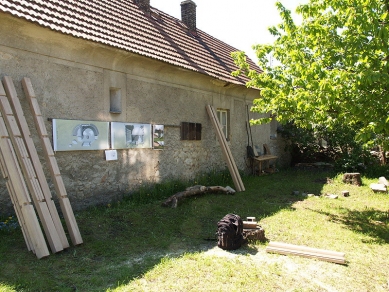
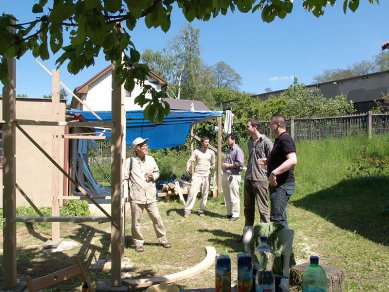
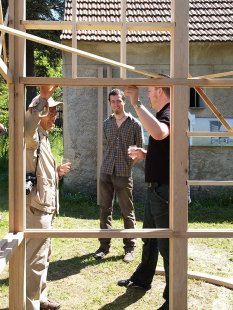
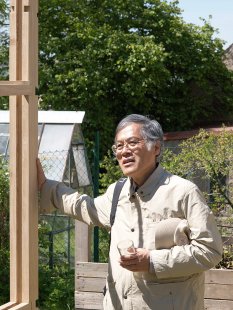
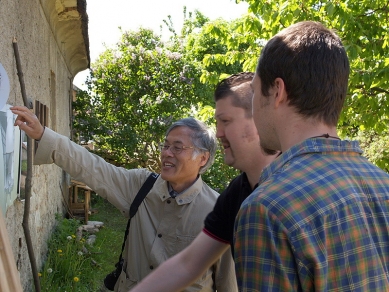

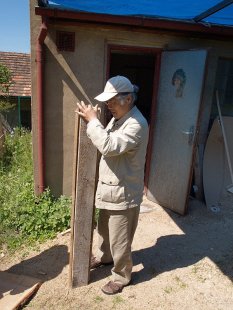
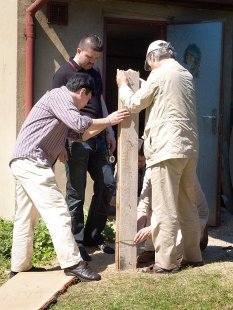

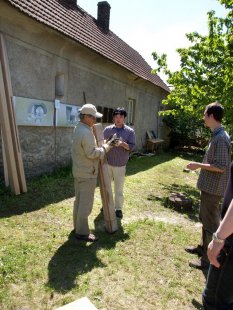
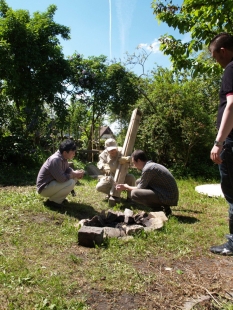

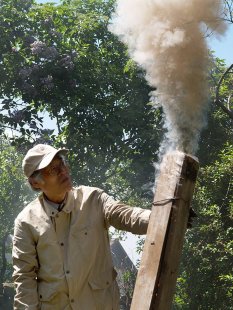
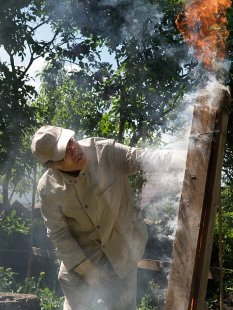
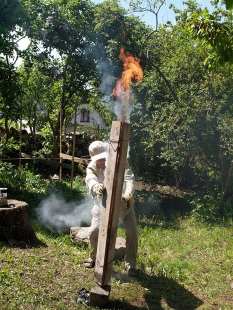


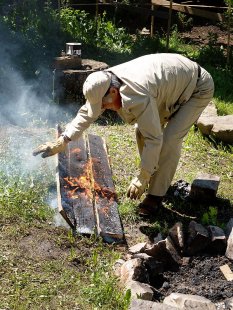
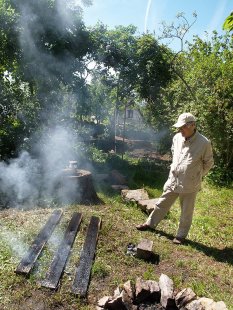
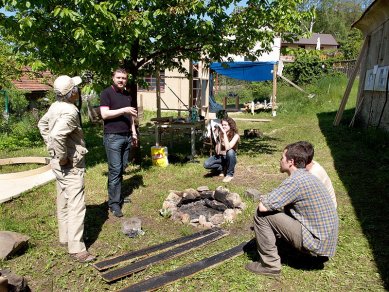
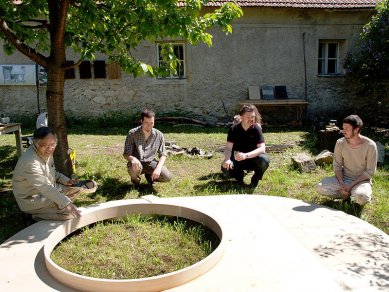
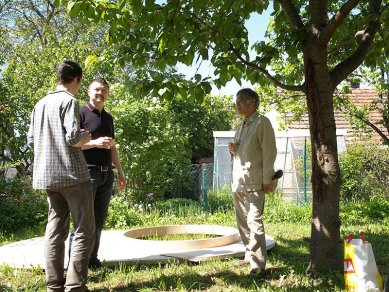
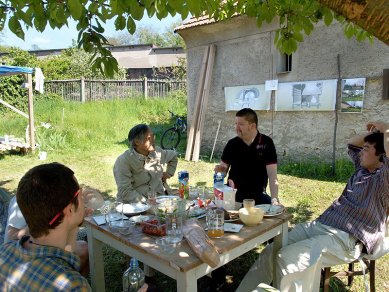
0 comments
add comment













